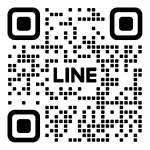First of all you need to know is what Qualitative Analysis in Research. Quantitative analysis uses numerical data to identify statistical relationships between variables. Quantitative data are numerical, ordinal, and nominal. For example, surveys, questionnaires, and evaluations that include multiple choice items and ratings (e.g., Likert scale) provide quantitative data for analysis.
Data analysis tools help researchers make sense of the data collected. It enables them to report results and make interpretations. How the data is analyzed depends on the goals of the project and the type of data collected. Some studies focus on qualitative data, others on quantitative data, and many on both.

Here’s your tip to help you to deal with your work!
1. There is a time and place to keep things simple
- Simple questions are often pragmatic ways to get the answer you are looking for.
- Complex modeling and analysis have their place and can be extremely useful, but try to take a step back and think: Can this question be answered more efficiently?
- Avoid ‘marketing-speak’ and keep things conversational, use terms and phrases that the person on the other end is going to understand.
2. Aim to get both emotional and rational responses from the respondents
- Consumers make both emotional and rational decisions, so it is important to measure both.
- Emotion and logic are intertwined, and it would be foolhardy to base your strategies on the assumption that they are mutually exclusive.
- This could be as simple as showing some stimulus and asking an open-ended question: ‘how this idea made you feel?’ or by providing a list of emotions for the respondent to choose from.
- You may not be able to cover the entire spectrum of emotions, but often sentiment is just as valuable.
3. Don’t lead the conversation toward the answers you want to hear
- It is natural to want your research to confirm theories you already have; however, it is important to keep your personal opinions distant from the research methodology – we want to capture the genuine opinions which exist out there!
- Keeping personal opinions distant leads to more reliable results and can greatly affect the success of any decisions made based on the research.
4. Try to test in black and white, avoid the grey areas
- When testing multiple items next to each other, it is advisable to not get too bogged down in the details.
- It is often the case that marketers will want to test concepts or statements with only very slight changes in wording that will have no real significant impact on audience response. For example, if you’d like to test a handful of positioning statements, keep the format consistent but ideas, concepts, or themes vastly different.
5. Decide on the signposts for success
- It is important that you and your team all agree on what results are going to define success.
- Before you give the go-ahead to launch fieldwork, take a moment to sit down in front of your questionnaire and think about what the results will look like. What result for each question would be considered a success? Should it meet or exceed benchmark or control scores? If so, what are the benchmarks or control scores?
6. Try to get both the why and the what
- While any researcher will recommend keeping text-based open-ended questions (verbatim) to a minimum, for key questions you should be asking respondents why they answered the way they did.
- If you do so, try to be creative in the way you ask the question (like we see in qual), simply asking “why?” doesn’t always spur inspiring or articulate responses. For example, you could ask “can you give me an example of when that was a problem for you?”
7. Be aware of the opportunity for replication
- Be sure to construct your research methodology so that you can easily replicate in future for easy comparison across each point in time.
- Do your best to future proof the questions and create clear and concise documents that detail the research, so someone else in your company can come in at any point and pick up where you left off.
- Try to consider ways you can easily replicate the results so that time isn’t wasted re-charting the figures as each new wave of research comes in.
8. Understand the importance of timing
- Think ahead to the next 12 months, and try and identify the best time to conduct some quantitative research.
- Try to consider external factors like seasonal or holiday periods, and key dates internally like EOFY, campaign launches, or reporting deadlines. Doing this will ensure you aren’t scrambling last minute, which often results in poorly executed research. .
No matter what your data analysis is about, using these steps and tips can help you to effectively analyse all that information. It’s important to get the analyses right as the validity of your research rests on it. GoodLuck!
Cradits :
- https://greenbookblog.org/2018/04/26/8-tips-for-conducting-quality-quantitative-research/?sa=X&ved=2ahUKEwitlsn9yv_mAhXYAnIKHf3DB8wQFnoECAoQBQ
https://encrypted-tbn0.gstatic.com/images?q=tbn%3AANd9GcRsyMHrH2Qk7Cti49qdVVL-s7xgZh5vaHuECLFys90fXNVhX68r






